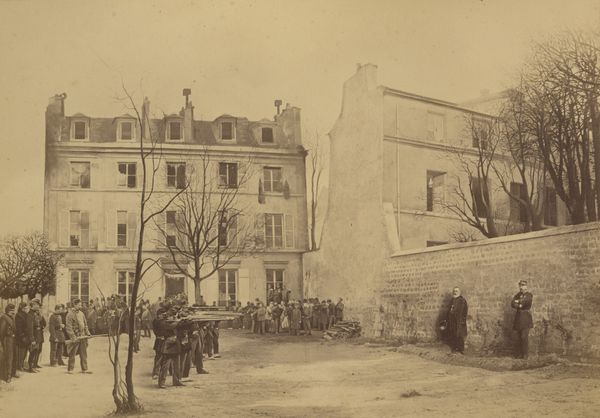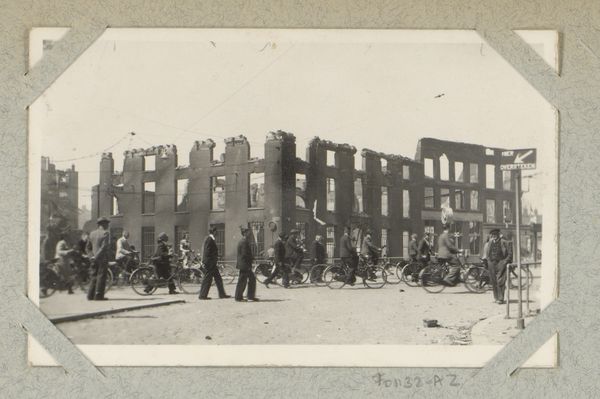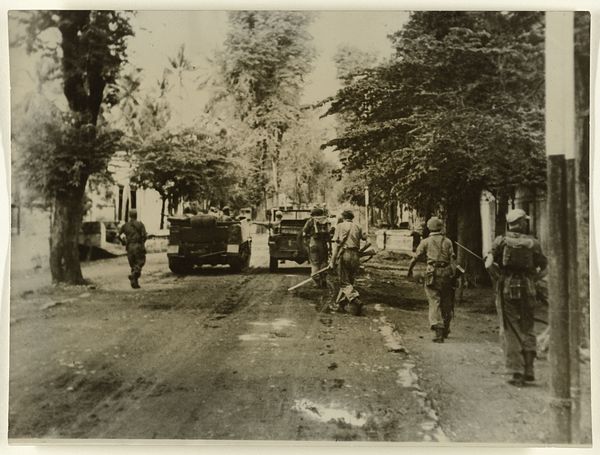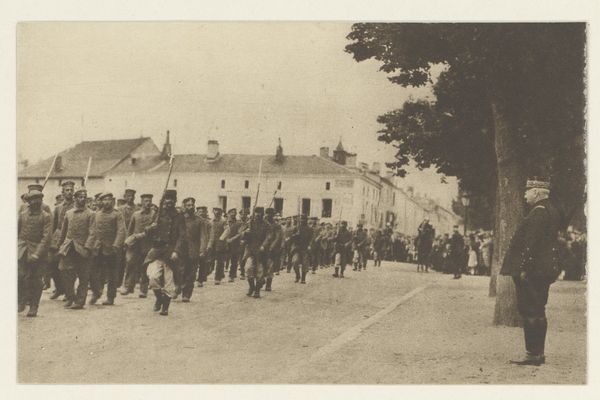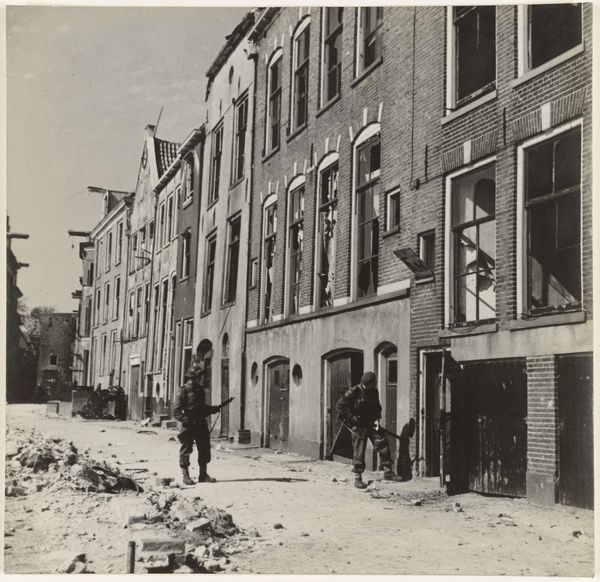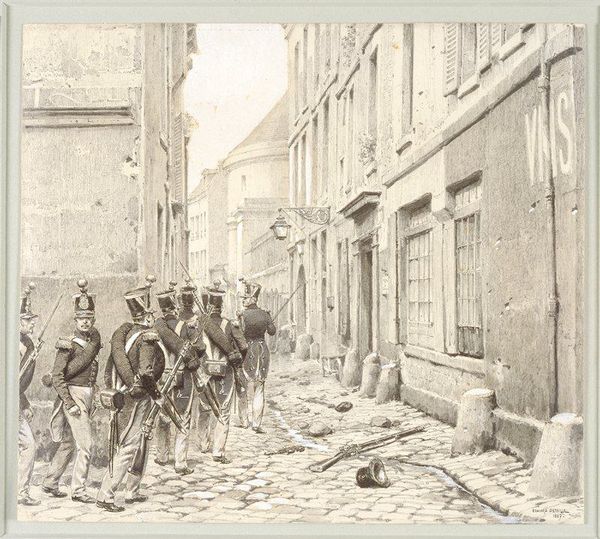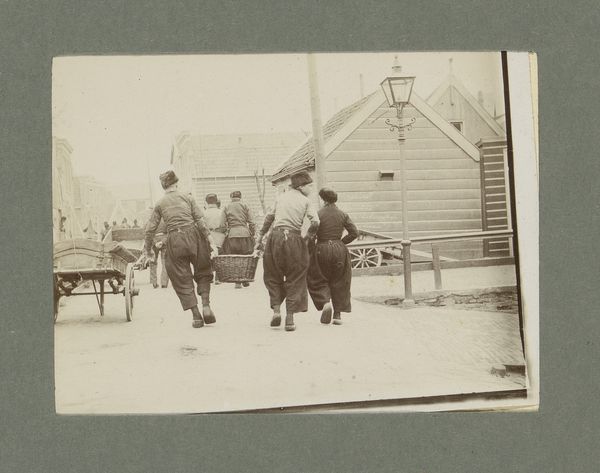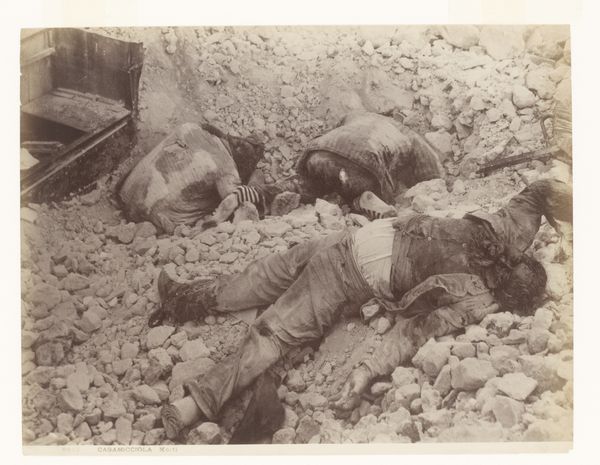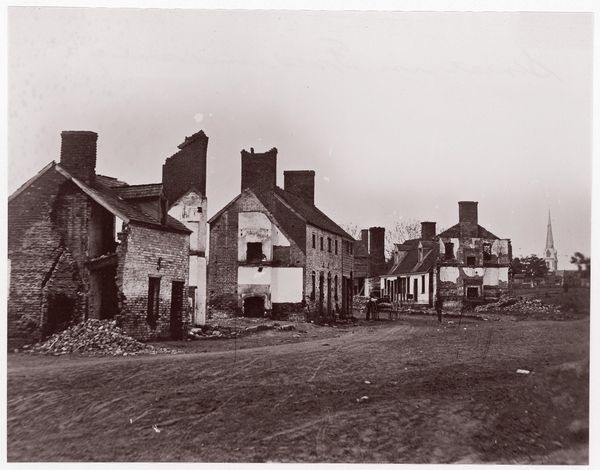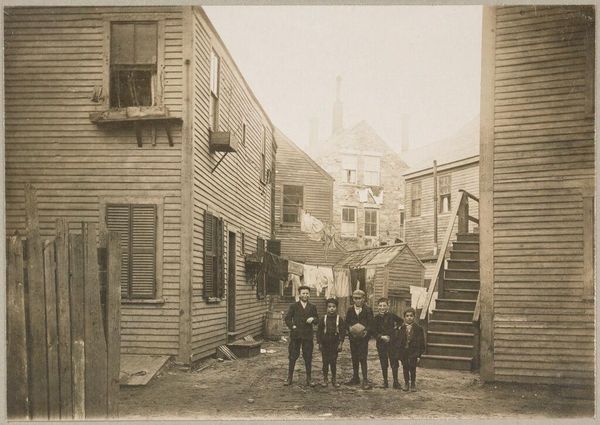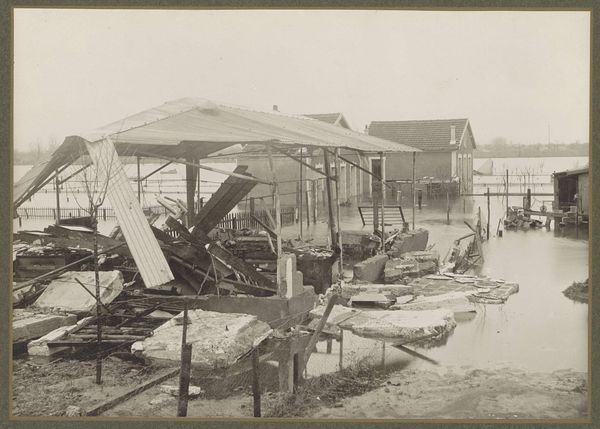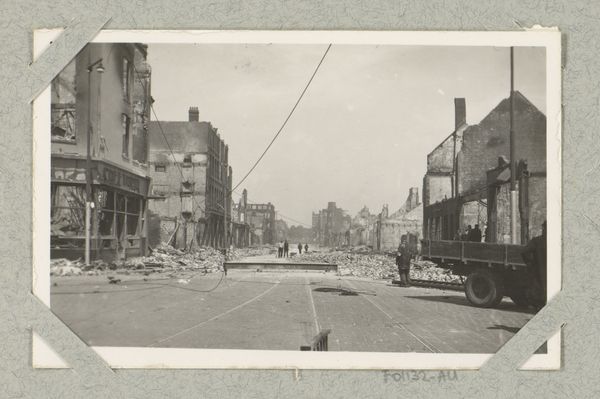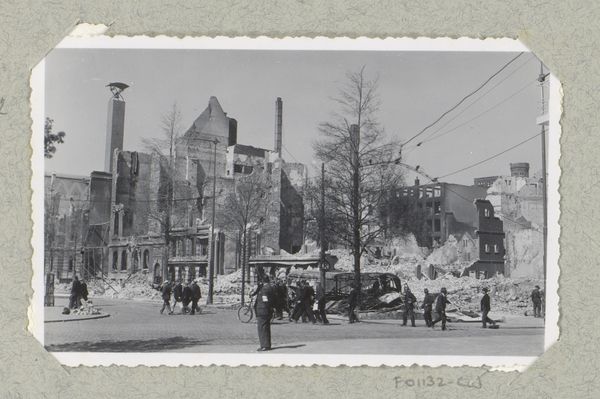
photography, gelatin-silver-print
#
war
#
landscape
#
photography
#
photojournalism
#
gelatin-silver-print
#
cityscape
#
modernism
#
realism
Dimensions: height 186 mm, width 222 mm
Copyright: Rijks Museum: Open Domain
Editor: This photograph, "Yanks take over war-battered French town," was taken in 1944, likely by a photographer from the Associated Press. The starkness of the gelatin-silver print is really striking; it perfectly captures the devastation, but it's hard to believe that the soldiers marching are truly taking over with bodies lying in the foreground. How do you see this image? Curator: I see a powerful, carefully constructed narrative designed for public consumption. Think about it: This image isn't just about showing war; it's about shaping public perception of the war and the role of American soldiers as liberators. The photograph uses the stark reality of destruction—the bombed-out buildings, the fallen soldier in the foreground. And look at those flags and fresh troops heading down the street in seemingly great spirits! What's the hotel they are outside, and is that really safe given what surrounds it? Editor: Yes! Hotel d'Aiglan it looks like from the writing across the building. So, this wasn't an objective recording but an argument for the success of American military intervention. Curator: Precisely. The photographer likely knew the photo would be distributed widely in American newspapers and magazines. The goal would be to demonstrate American strength and French appreciation. What the photograph does not show could also make an argument about what war means to local people, or to the "defeated enemy". Editor: I hadn't considered the staging aspects and the intended audience so deeply before. I suppose the inclusion of dead soldiers gives the photograph that “Realist” feel, or perhaps satisfies what people think war actually looks like, to balance the uplifting narrative? Curator: Perhaps. Or perhaps this fallen body represents "acceptable losses." A necessary, and maybe even patriotic, sacrifice. A sobering image that supports the larger narrative. Consider too the ethical considerations of documenting—or, as I'm arguing, *framing*—someone's death. Editor: It's unsettling to consider. I came in with a general sense of the photograph, and now I have so many more questions and things to reflect on! Curator: Exactly. That's the point of engaging with art through a historical lens: not just to appreciate the aesthetic, but to interrogate the social and political forces at play.
Comments
No comments
Be the first to comment and join the conversation on the ultimate creative platform.
